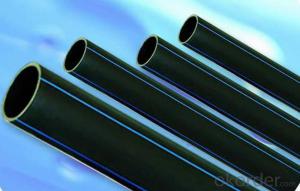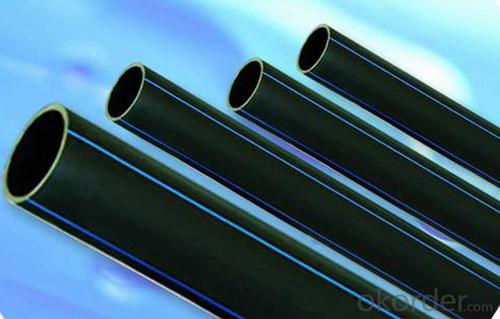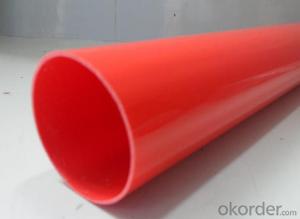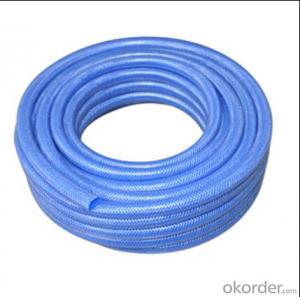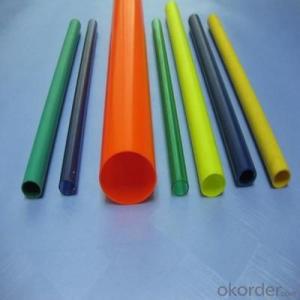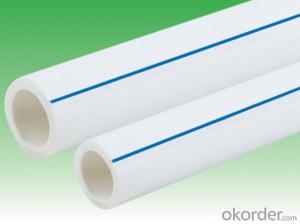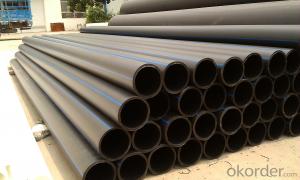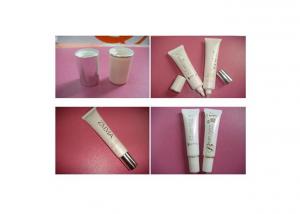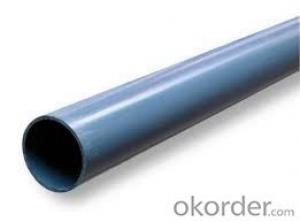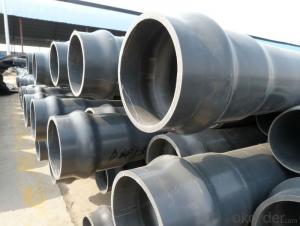Plastic Tubes HDPE Pipe ISO4427-2000 DN25
- Loading Port:
- China Main Port
- Payment Terms:
- TT OR LC
- Min Order Qty:
- -
- Supply Capability:
- -
OKorder Service Pledge
OKorder Financial Service
You Might Also Like
Physical properties[edit]
Polyethylene is a thermoplasticpolymer consisting of long hydrocarbon chains. Depending on the crystallinity and molecular weight, a melting point and glass transition may or may not be observable. The temperature at which these occur varies strongly with the type of polyethylene. For common commercial grades of medium- and high-density polyethylene the melting point is typically in the range 120 to 180 °C (248 to 356 °F). The melting point for average, commercial, low-density polyethylene is typically 105 to 115 °C (221 to 239 °F).it is transprant.
Chemical properties[edit]
Most LDPE, MDPE and HDPE grades have excellent chemical resistance, meaning that it is not attacked by strong acids or strong bases. It is also resistant to gentle oxidants and reducing agents. Polyethylene burns slowly with a blue flame having a yellow tip and gives off an odour of paraffin. The material continues burning on removal of the flame source and produces a drip.[3] Crystalline samples do not dissolve at room temperature. Polyethylene (other than cross-linked polyethylene) usually can be dissolved at elevated temperatures in aromatic hydrocarbons such as toluene or xylene, or in chlorinated solvents such as trichloroethane or trichlorobenzene.[4]
GB/T13663-2000:
| PE63管材规格 | |||||
| 公称 外径dn,mm | SDR33 | SDR26 | SDR17.6 | SDR13.6 | SDR11 |
| 公称压力 PN,Mpa | |||||
| 0.32 | 0.4 | 0.6 | 0.8 | 1.0 | |
| 公称 壁厚 | 公称 壁厚 | 公称 壁厚 | 公称 壁厚 | 公称 壁厚 | |
| 16 | 2.3 | ||||
| 20 | 2.3 | 2.3 | |||
| 25 | 2.3 | 2.3 | 2.3 | ||
| 32 | 2.3 | 2.4 | 2.9 | ||
| 40 | 2.3 | 2.3 | 3.0 | 3.7 | |
| 50 | 2.3 | 2.9 | 3.7 | 4.6 | |
| 63 | 2.3 | 2.5 | 3.6 | 4.7 | 5.8 |
| 75 | 2.3 | 2.9 | 4.3 | 5.6 | 6.8 |
| 90 | 2.8 | 3.5 | 5.1 | 6.7 | 8.2 |
| 110 | 3.4 | 4.2 | 6.3 | 8.1 | 10.0 |
| 125 | 3.9 | 4.8 | 7.1 | 9.2 | 11.4 |
| 140 | 4.3 | 5.4 | 8.0 | 10.3 | 12.7 |
| 160 | 4.9 | 6.2 | 9.1 | 11.8 | 14.6 |
| 180 | 5.5 | 6.9 | 10.2 | 13.3 | 16.4 |
| 200 | 6.2 | 7.7 | 11.4 | 14.7 | 18.2 |
| 225 | 6.9 | 8.6 | 12.8 | 16.6 | 20.5 |
| 250 | 7.7 | 9.6 | 14.2 | 18.4 | 22.7 |
| 280 | 8.6 | 10.7 | 15.9 | 20.6 | 25.4 |
| 315 | 9.7 | 12.1 | 17.9 | 23.2 | 28.6 |
| 355 | 10.9 | 13.6 | 20.1 | 26.1 | 32.2 |
| 400 | 12.3 | 15.3 | 22.7 | 29.4 | 36.3 |
| 450 | 13.8 | 17.2 | 25.5 | 33.1 | 40.9 |
| 500 | 15.3 | 19.1 | 28.3 | 36.8 | 45.4 |
| 560 | 17.2 | 21.4 | 31.7 | 41.2 | 50.8 |
| 630 | 19.3 | 24.1 | 35.7 | 46.3 | 57.2 |
- Q: Just curious . . . Seems like it would less expensive and safer.
- Well, Neon is an inert gas. It seldom if ever will react with anything. The reason being is that the tubing can get substantially hot. Plastic melts at relatively cold temperatures...for instance, even hot water can melt plastic. It wouldn't really be safer to have the plastic tubing melt on you...now would it? If the neon gas escapes...it isn't really any big deal. Neon is already part of our natural air anyway..that is where they get it from. What is a big deal in event of failure, is if the gas isn't a pure inert gas. ONLY the red-orange lights are literally Neon lights. The other colors are actually fluorescent lights (with the exception of some Argon/some Krypton/some Xenon lights). Fluorescent lights use a very toxic gas to function...MERCURY VAPOR.
- Q: Jump rope in the middle of the cut of plastic pipe role
- A good rope is a racket, not a cord or a cord.
- Q: What are the common sizes of plastic tubes used for bottling?
- The common sizes of plastic tubes used for bottling vary, but some typical sizes include 1 ounce, 2 ounces, 4 ounces, 8 ounces, and 16 ounces.
- Q: How to connect the plastic pipe and the steel pipe joint?
- Because the thermal expansion coefficient of plastic is larger than steel, if the plastic pipe is in it, the steel pipe is outside, and when the temperature is lower, the plastic joint will crack automatically because the plastic pipe is shrinking badly. In turn, it won't crack easily
- Q: Are plastic tubes safe for pharmaceutical products?
- Yes, plastic tubes are safe for pharmaceutical products. They are commonly used in the industry due to their durability, flexibility, and ability to protect the contents from contamination. Additionally, plastic tubes can be made from various materials that comply with strict safety regulations and standards.
- Q: remove it. Unfortunately I had to cut it off. I pushed the pastic in as far as I could but it didnt go all the way down. Now my dipstick cant be reinstalled and also if I do ever push the plastic down, will that affect the motor? I heard that there is a screen that will prevent any objects (plastic tube) from getting into engine.
- Yes there is a screen on the oil pick-up but a long piece of tube is going to probably hit counterweights or other parts of the rotating assembly. So it time to pull the dipstick tube out of the block and see if you can get the tube out or if all else fails pull the oil pan. It would be easier to suggest which route to go if I knew the application
- Q: What's the difference between the water supply U-PVC plastic pipe and the UPVC plastic pipe?
- At present, most water pipes are HDPE pipes and PPR pipes.
- Q: Can plastic tubes be labeled with product information?
- Yes, plastic tubes can be labeled with product information.
- Q: Can plastic tubes be used for storing adhesives or sealants?
- Yes, plastic tubes can be used for storing adhesives or sealants. Plastic tubes are often used for packaging and storing various types of products, including adhesives and sealants. These tubes are designed to provide airtight and leak-resistant storage, ensuring the quality and longevity of the stored materials.
- Q: im looking for a place to buy a small piece of latex tubing maybe about a foot long. i checked local pharmacy and drug stores with no luck. any other suggestions?
- I okorder /... All done.
Send your message to us
Plastic Tubes HDPE Pipe ISO4427-2000 DN25
- Loading Port:
- China Main Port
- Payment Terms:
- TT OR LC
- Min Order Qty:
- -
- Supply Capability:
- -
OKorder Service Pledge
OKorder Financial Service
Similar products
Hot products
Hot Searches
Related keywords
